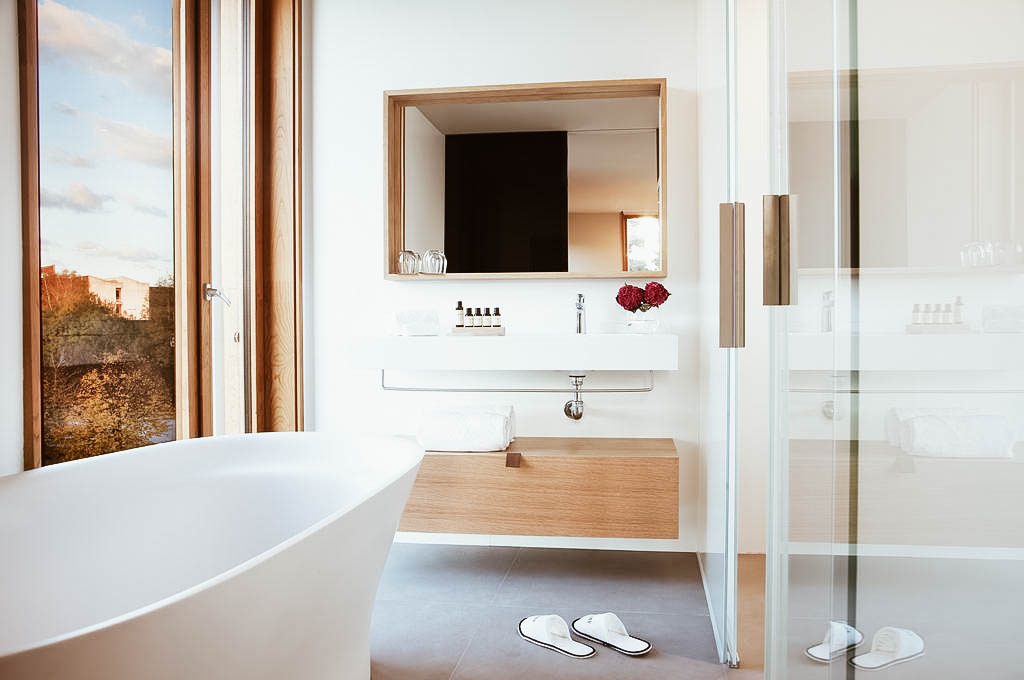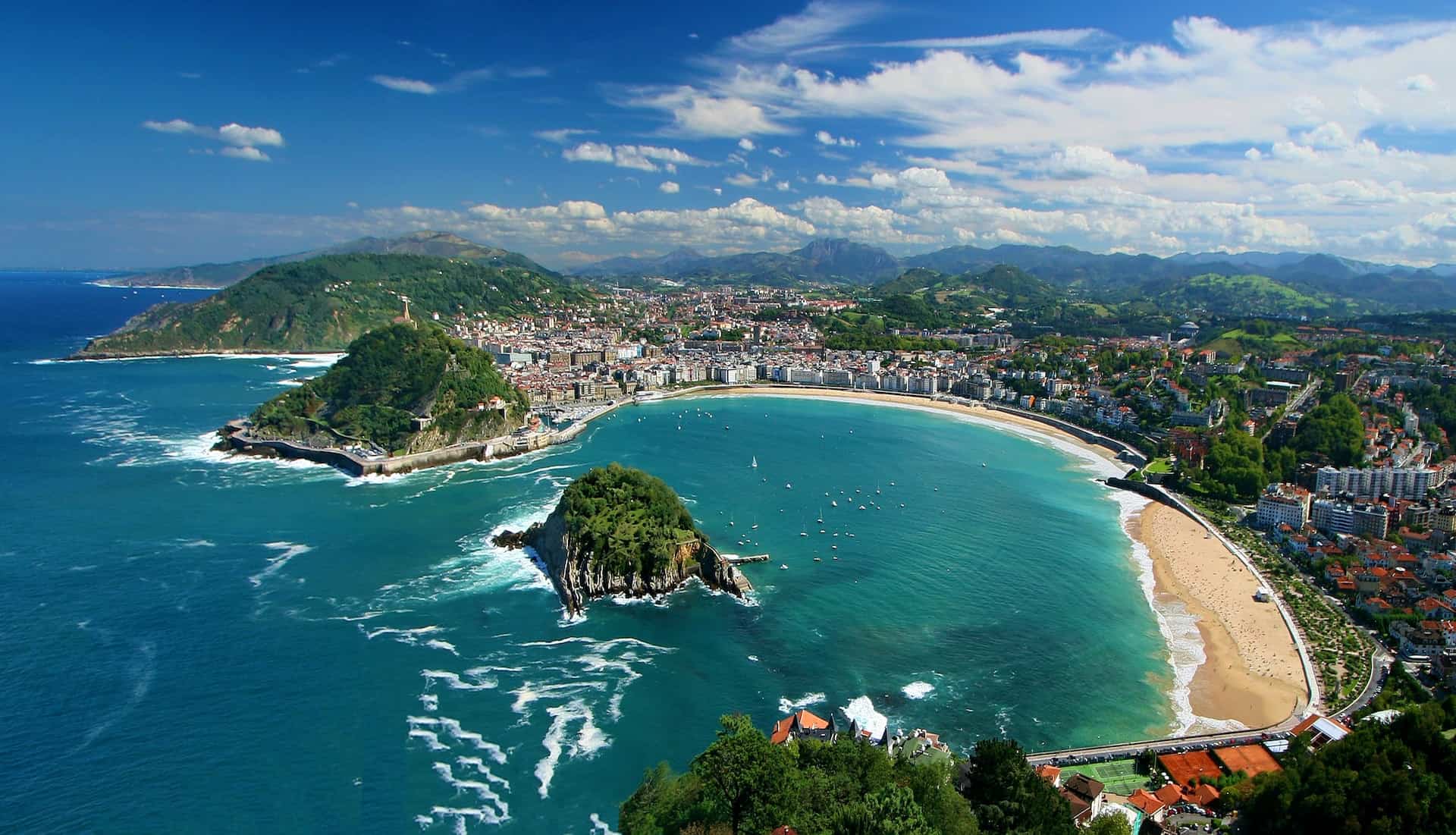The Basque region is steeped in history and culture so distinctive that it has become one of the most unique destinations in all of Europe. And no place is more representative of the region than San Sebastian.
The seaside spot is known for its beaches, Belle Epoque architecture, renowned cuisine and international film festival. Established by Sancho el Fuerte in the twelfth century, Donostia, as the Basques call it, was a military stronghold thanks to its rugged coastline and fortifications. During the Peninsular Wars, Napoleon’s troops occupied the city but British forces drove them out in 1813. Unfortunately, the French laid waste as they retreated and it wasn’t until the late nineteenth century that the Old Quarter was fully rebuilt.
The city was a sleepy fishing town until Queen Isabell II visited, thus establishing it as a retreat for landed gentry. Today, San Sebastian is a popular year-round resort, one where you can relax and admire sandstone buildings, wide, leafy boulevards and Michelin-starred restaurants.
Getting to San Sebastian:
Traveling to San Sebastian from various European cities is an exciting opportunity to explore the picturesque beauty and culinary delights of the Basque Country in Spain. There are multiple transportation options available to reach San Sebastian, making it easily accessible for travelers. Here are the top 5 train routes departing from major European cities to San Sebastian:
1. Train from Paris to San Sebastian (approx. 5 hours): TGV, SNCF
2. Train from Madrid to San Sebastian (approx. 5 hours): Renfe
3. Train from Barcelona to San Sebastian (approx. 6 hours): Renfe
4. Train from Lisbon to San Sebastian (approx. 12 hours): Renfe, Comboios de Portugal
5. Train from Bordeaux to San Sebastian (approx. 4 hours): TGV, SNCF
Each of these train routes offers a comfortable and scenic journey, allowing you to enjoy the diverse landscapes as you approach the charming city of San Sebastian. With its stunning beaches, vibrant cultural scene, and renowned cuisine, San Sebastian is a destination that promises an unforgettable experience for all types of travelers. Whether you’re looking to relax by the sea, indulge in delicious pintxos, or explore the local history and architecture, San Sebastian has something to captivate every visitor.

San Sebastian is the perfect city break for anyone looking for an easygoing cultural getaway. Start your day watching the sunrise over the Urumea river and end it at one of the many pintxos bars around town.
Where to Eat in San Sebastian?
San Sebastian is a gastronomic mecca, known for its plethora of Michelin-starred eateries and pintxos bars, where small plates featuring regional and local delicacies are the norm.
Pintxos have been around for more than 100 years. Traditional pintxos feature bread piled high with meat, all topped with a cocktail stick but innovative chefs have created haute versions. Savor a traditional one with olives, peppers and anchovies at Bar Nestor or try a modern version with grilled sirloin and foie gras at Taberna Dakara Bi.
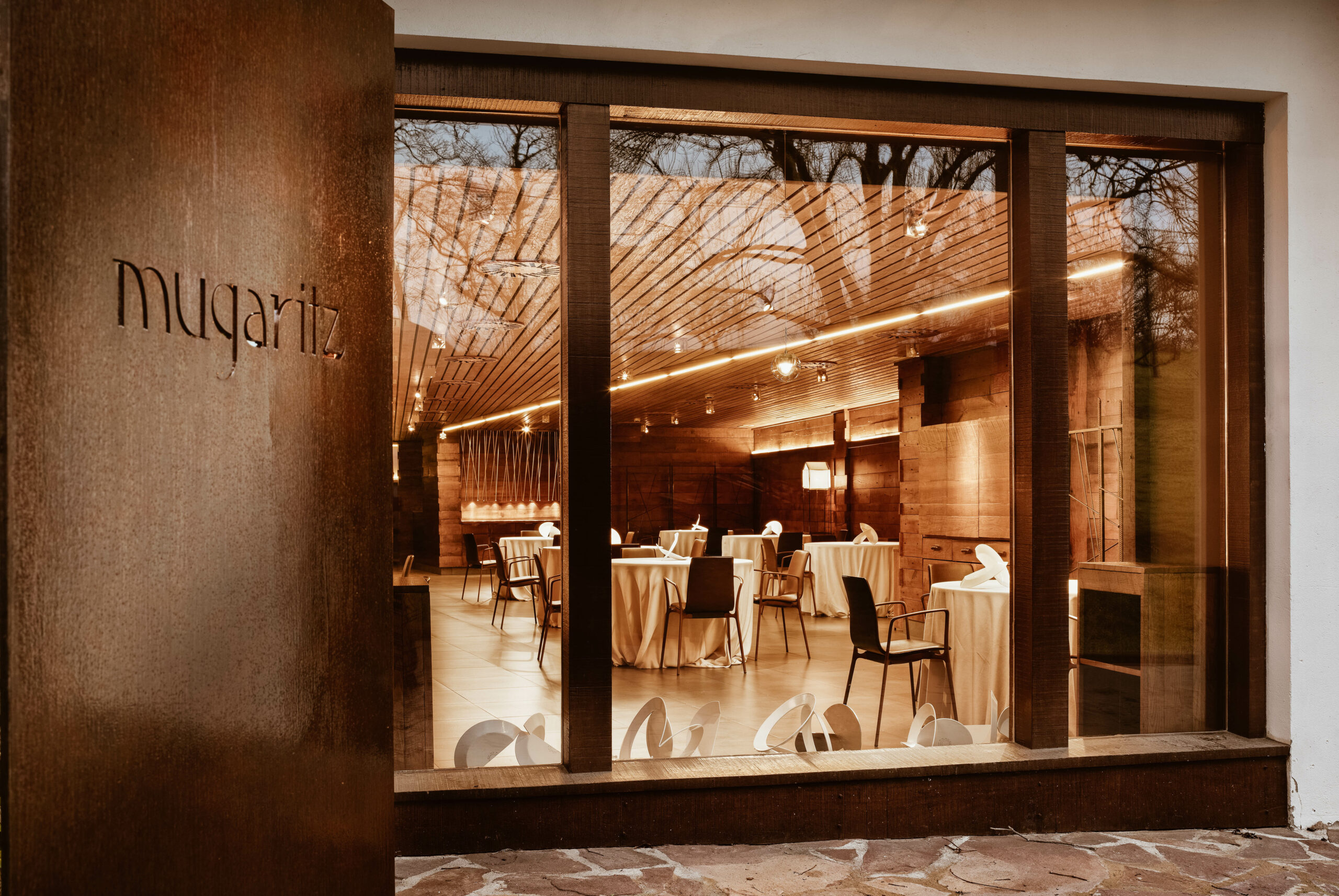

Fabled eateries dot the cityscape and gourmands from all over the world head to San Sebastian to savor their menus. Mugaritz’s two Michelin stars are well earned, thanks to its 20-course tasting menu. Enter the farmhouse exterior and admire the rustic-chic environs and savor Chef Andoni Luis Aduriz’s sauteed sea slugs and pine nut burrata.
What to do in San Sebastian?
San Sebastian is not a party town, so leave your neon tube top at home. Museums abound and feature the works of traditional and contemporary artists. Tabakalera, a former tobacco factory, is now a contemporary gallery showcasing the works of local Basque artists. The San Telmo Musea, named for the patron saint of seamen, is a convent-turned-museum that features the likes of El Greco and Rubens as well as ancient artifacts and ethnography.


After all that museum going it’s time to have a drink, and no beverage is more representative of the Basque than hard cider. Here cider houses rule. Locals flock to these convivial spots—often located in converted farm buildings—to wash down a pintxos with a crispy alcoholic cider.
Pelota is one of the most traditional pastimes in the region. Called jai alai in Latin America, the high-intensity sport—a combo of lacrosse and racquetball—is played in small stadiums with balls flying at 120 miles per hour. Head to the nearby city of Hernani to bask in the excitement of this ancient game.
Where to Stay in San Sebastian?
Hotel Maria Cristina, a Luxury Collection Hotel
Built in 1912, the Hotel Maria Cristina is a Belle Epoque marvel designed by architect Charles Mewes. Set on the river, the 139-room hotel boasts elegant design throughout. Rooms are neutral in tone with pops of purple throughout. Bathrooms are decorated with Pyrenees marble. Upgrade to the Bette Davis Suite, named for the famed Hollywood legend who lived at the hotel in the late 1980s, for a peek at her personal photos.
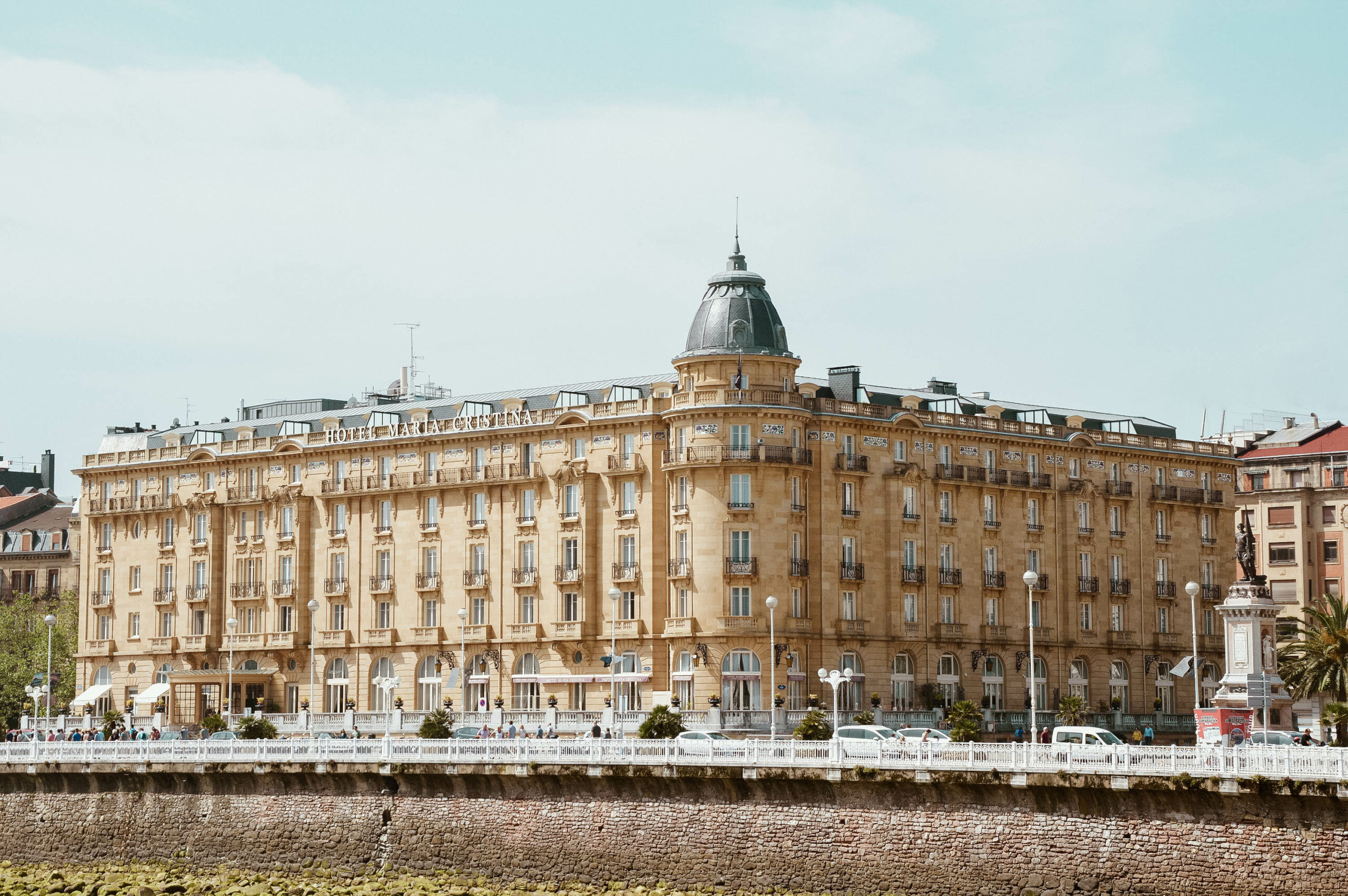
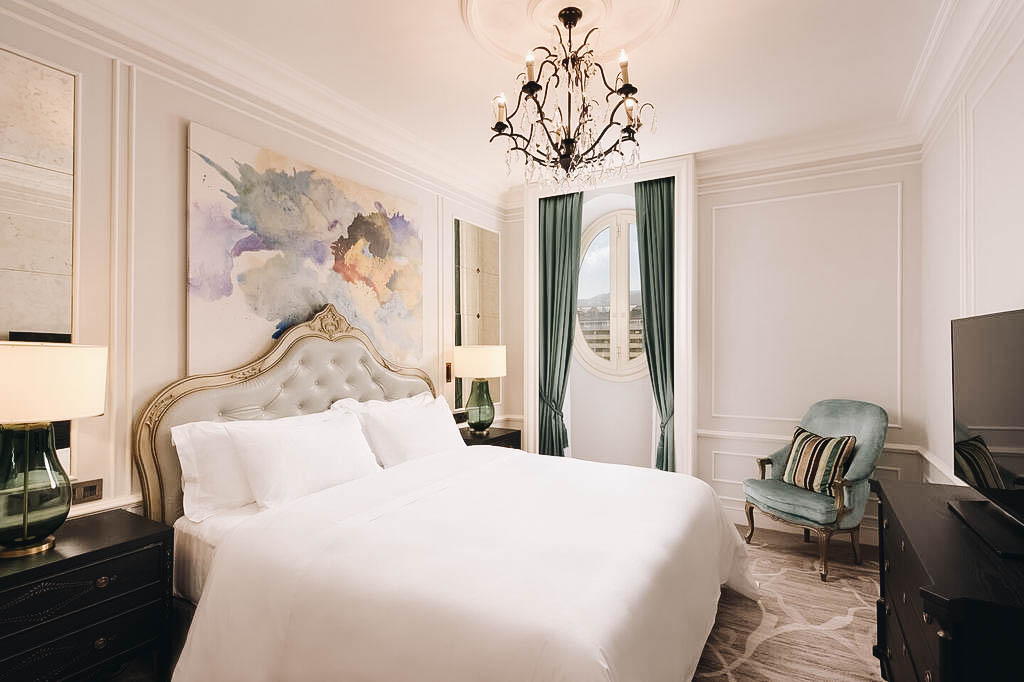
Arima Hotel
The family-run Armina Hotel is a sustainable oasis in the city. Furnishings are made from reclaimed wood as well as locally sourced stone and iron. The hotel uses geothermal and aerothermal devices to filter water and air and composts food and waste. Rooms feature clean accents and organic bedding, towels and toiletries. Upgrade to a suite for majestic forest views.
